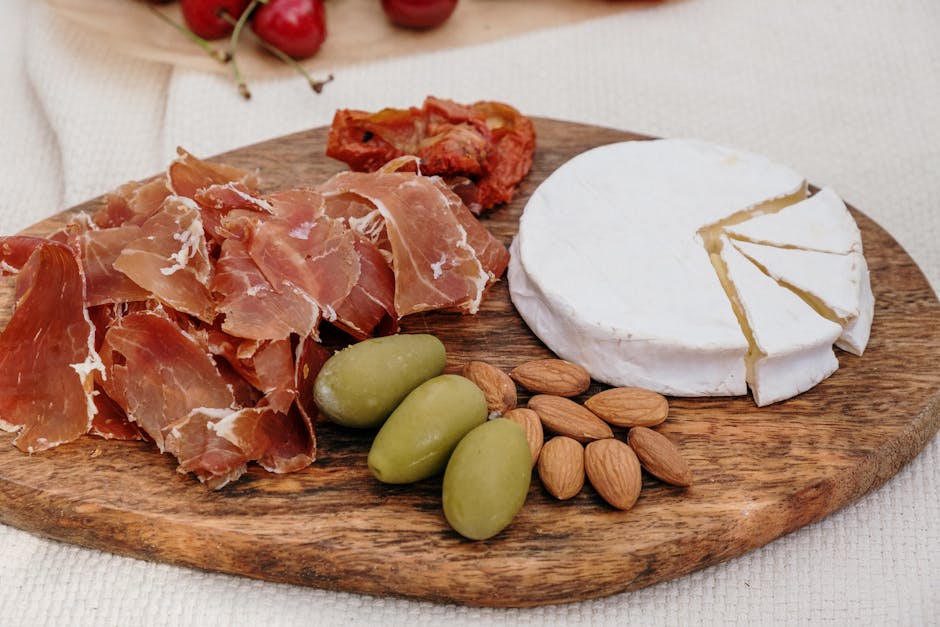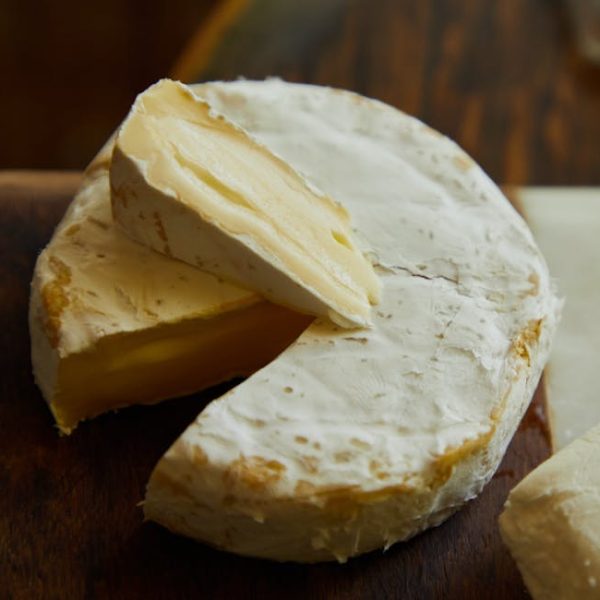From the bistros of France to your local deli counter, the creamy, slightly salty, and mildly aromatic Brie cheese never fails to impress the palate. Yet despite its elevated status on the cheese board, Brie owes its distinctive texture and nuanced flavors to careful storage and maintenance. In this article, we embark on a heavenly journey into the realm of Brie cheese storage, providing expert tips that will ensure your Brie stays fresh and flavorful.
Optimal Temperature for Storing Brie
In the world of Brie, temperature plays a monumental role in preserving quality. Too warm, and it may mature too quickly or spoil. Too cold, it may lose its creamy texture. Therefore, the ideal temperature for storing Brie cheese is 40°F (4°C) to 50°F (10°C). A consistent temperature in this range ensures that the sublime balance of flavors continues to develop at an appropriate pace without leading to premature spoilage.
- Lower than 40°F (e.g., in a refrigerator) might prevent the Brie from maturing further, leading to a less flavorful experience.
- Above 50°F, there’s a risk of too rapid maturation, resulting in overly strong flavors and a gritty texture.
Pro Tip: Don’t have a fridge with precise temperature control? Fear not! You can achieve the optimal Brie storage temperature by storing your Brie in the warmer parts of your fridge – usually the vegetable drawer or the compartment on the door.
Best Containers and Materials for Brie Storage
The right material for storing Brie is just as critical as the perfect temperature. The three most common choices are beeswax wraps, foil, and plastic wraps. Each of these materials comes with benefits and considerations:
| Material | Advantages | Disadvantages |
|---|---|---|
| Beeswax Wraps | Eco-friendly, breathable, reusable | More costly, less available, may impart a slight taste |
| Foil | Easy to use, widely available | Non-breathable, not reusable, can alter taste with long-term usage |
| Plastic Wraps | Commonly available, inexpensive | Can trap too much moisture, environmental concerns |
Pro Tip: Regardless of your choice of material, the trick to successful wrapping lies in allowing the cheese to breathe. Overly tight wrapping can create an overly humid environment leading to unwanted molds, while loose wrapping might expose the cheese to the risk of dried out edges. Aim for a snug fit that maintains the Brie’s shape while allowing it to breathe a bit.
Proper Brie Storage Technique
Storing Brie isn’t just about finding the right temp and container; it’s also a gentle art that requires the right technique. Here are the key steps to correctly store Brie:
- Keep the original packaging: Brie cheese often comes in a breathable paper or foil wrap that’s ideal for storage.
- Wrap snugly: Whether you’re using the original wrapping or your choice of storage material, ensure it fits tightly around the Brie but isn’t suffocating it.
- Store in the right spot: Place your wrapped Brie in the warmer parts of your refrigerator, typically the vegetable drawer or the door compartments.
Best Practice: Don’t cut your Brie into pieces before storage. Keep it whole, or in the largest possible portion, to minimize the cheese’s exposure to air and prevent drying out. When you’re ready to indulge, only cut off as much as you plan to consume.
Brie Storage Duration: How Long Can It Stay Fresh
What’s the shelf-life of a beautifully stored Brie, you ask? Well, that depends on a number of factors including its age at purchase, the quality of the storage conditions, and the temperature at which it’s kept.
- Brie bought pre-cut from a grocery store often lasts about 1 to 2 weeks if stored properly.
- Fresh Brie that’s stored impeccably can maintain its quality for 2 to 3 weeks.
- Once cut, Brie can stay fresh for about a week.
Take note, though, that Brie’s desirable attributes, including its wonderful texture, can change over time, even before it spoils.
Pro Tip: Navigating the world of cheese spoilage can be a bit daunting. For Brie, signs to look out for are an ammonia-like smell, off-putting flavors, and a dried-out texture. If your Brie has wide patches of mold colors besides the usual white or bloomy rind, it’s better not to take a risk and discard the piece.
Freezing Brie: Pros and Cons
Perhaps you’ve found yourself with more Brie than you can reasonably consume? Frozen storage might be an option, albeit one with pros and cons to weigh.
| Aspect | Advantages | Disadvantages |
|---|---|---|
| Flavor | Freezing can preserve Brie’s flavor for longer periods | Freezing can slightly alter the taste, and some subtleties of flavor might be lost |
| Texture | No significant change when used in melted dishes | The creaminess can be affected, becoming more crumbly after thawing |
| Shelf Life | Can increase shelf-life up to six months | There is a degradation of quality over time and quick consumption is still advisable once thawed |
Best Practice: If you decide to freeze Brie, make sure it’s well-wrapped in an airtight packaging to avoid freezer burn. Thaw your Brie slowly in the refrigerator over 24 to 48 hours before serving to maintain as much of its original quality as possible.
In conclusion, storing Brie is more art than science, but it’s an art you can easily master with a bit of practice. Remember, the keys to successful storage lie in balancing the right temperature, correct material, and gentle technique. Happy storing!
Key Takeaway:
- Maintaining the right temperature is essential for preserving the quality of Brie. The recommended storage temperature for Brie is between 40°F (4°C) and 50°F (10°C).
- Choosing the appropriate storage material also matters in Brie storage. Beeswax wraps, foil, and plastic wraps are common choices, each with its own pros and cons.
- There’s a certain technique to storing Brie that involves proper wrapping and placement within the fridge. Unnecessary cuts to the Brie should be avoided to minimize exposure to air.
- Brie’s shelf life can be influenced by factors like the age of the Brie at purchase, storage conditions, and storage temperature.
- Freezing Brie is an option for longer storage, but it comes with potential trade-offs in flavor and texture.
Taking good care of your Brie will reward you with a rich, exciting, and flavor-packed cheese experience every single time. By following these expert tips on temperature, material selection, proper storage technique, timely consumption, and even freezing, you can extend the shelf life of your Brie and savor its delightful flavor for longer.
FAQs
Q: Is there a safe way to eat Brie that’s past its best-before-date?
A: Always take note of changes in smell, flavor, or appearance of Brie. If it has an ammonia-like odor, unusual flavors, abnormal colors, or a dried texture, discard it immediately. It’s not worth risking your health for.
Q: Why can’t I just store Brie in any part of my fridge?
A: The temperature in different parts of your fridge may vary. Brie requires a specific temperature range to maintain its freshness and flavor. The vegetable drawer or door compartment generally provides the ideal temperature.
Q: Can I reuse Brie’s original wrapping for storage?
A: Yes, you can. In fact, keeping the original wrapping of Brie is recommended, as it’s designed to be breathable and suitable for storage.
Q: What happens if I tightly wrap my Brie in storage material?
A: Tightly wrapping Brie can trap too much moisture which may result in undesirable mold growth. Aim for a snug but gentle wrap.
Q: How can freezing affect the flavor and texture of Brie?
A: Freezing can prolong the shelf-life of Brie but may slightly alter its taste and texture. It may lose some of its creaminess and become more crumbly after thawing.
We hope this guide has enlightened you about the proper storage of Brie. Feel free to share this article and explore more posts on our website for more food tips and insights.






